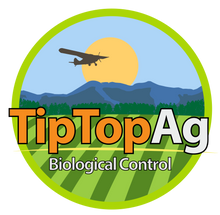What is an IPM Program
Using beneficial insects for pest management is a Biological Control method that is well researched and documented for use with IPM programs. This comprehensive and sustainable approach effectively manages pests by minimizing or eliminating the need to use chemical pesticides. Whether in agricultural, horticultural, or urban settings, IPM is a holistic strategy to prevent and control pests in a way that promotes environmentally friendly and economically sustainable pest management systems.
Beneficial insects are highly effective when released before harmful pest populations surge. However, their effectiveness declines in situations where pest populations have already exceeded preventative steps. Success of using an IPM approach involves introducing natural predators in the Controlled Environmental Agriculture (CEA) setting before pest issues arise. Therefore, it’s crucial to be consistently engaged and observant in preventative practices, and to act immediately before pest populations grow out of control.

Key Components of an IPM Program:
-
Cultural / Sanitation Practices: Cultural / Sanitation Practices - This involves practices such as crop rotation, intercropping, implementing good sanitation and hygiene practices, maintaining healthy soil, and using proper cultural practices to create unfavorable conditions for pests.
-
Physical / Mechanical Control: Monitor you garden by hand weeding, pruning, insect traps, barriers, mulching, and removing pests by hand.
-
Biological Control: Use of natural enemies or beneficial organisms to manage pest populations. These include predatory insects, parasitoids, beneficial nematodes, and microbial agents that prey on or parasitize pests, helping to keep their numbers in check.
-
Chemical Control (Last Resort): Chemical controls are only used when preventive, biological, and mechanical/physical measures have proven insufficient to manage pest populations effectively.
ADVANTAGES OF AN IPM PROGRAM:
-
Environmentally Friendly: IPM prioritizes the use of natural and non-toxic pest control methods, reducing the harmful impact of chemical pesticides on beneficial insects, wildlife, and water systems.
-
Cost-Effective: By combining various control methods and preventing extensive damage, IPM can be more cost-effective in the long run compared to frequent and indiscriminate pesticide use.
-
Sustainable Agriculture: IPM promotes sustainable farming practices by maintaining biodiversity, conserving resources, and supporting a healthier ecosystem.
-
Minimizes Pesticide Resistance: By rotating control methods and using pesticides judiciously, IPM helps prevent pests from developing resistance to chemical treatments.
-
Improved Crop Quality: With targeted and balanced pest management, IPM allows for healthier and higher-quality crops, benefiting both farmers and consumers.
IPM serves as a holistic and science-based approach, allowing agricultural professionals to manage pests effectively while safeguarding the environment and long-term agricultural viability.
